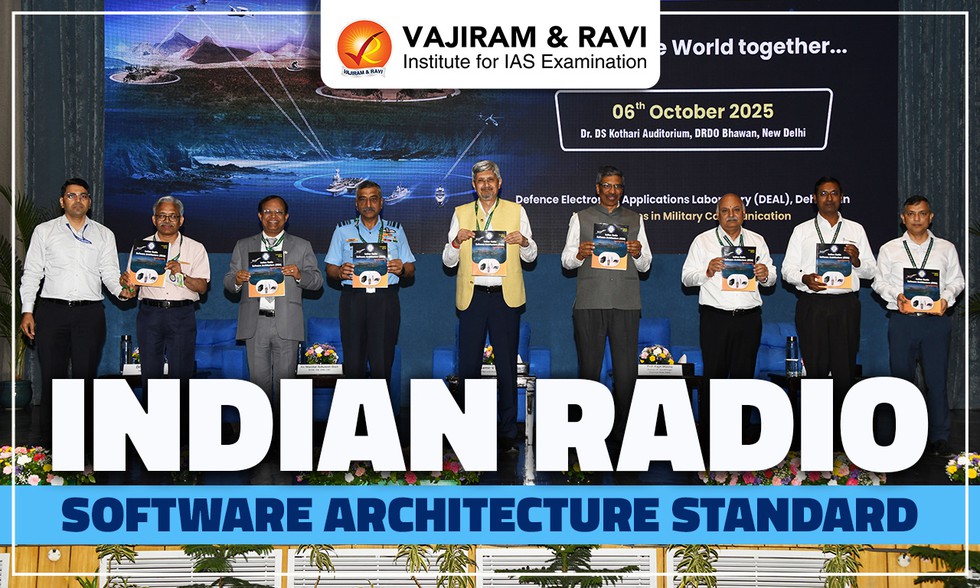About Indian Radio Software Architecture standard:
- It provides a standardised software architecture defining how different radio systems communicate securely and efficiently.
- It is India’s first national specification defining a standardized software architecture for Software Defined Radios.
- Vision: To position IRSA as a global benchmark — enabling India to shape the future of SDR technology and export IRSA-compliant solutions to friendly nations.
- Key Features of Indian Radio Software Architecture standard
- It is a comprehensive software specification for Software Defined Radios (SDR), defining standardized interfaces, APIs, execution environments, and waveform portability mechanisms, SDR Interoperability, Certification and Conformance.
- India’s IRSA now joins the elite group of global SDR frameworks — alongside the US Software Communications Architecture (SCA), Europe’s ESSOR, and NATO’s STANAG SDR standards.
- It is prepared as per Standardization of Indigenous Software Defined Radio initiative of Directorate of Standardization (DoS) under Department of Defence Production (DDP) in Ministry of Defence (MOD) India.
What is Software Defined Radio?
- SDR is a radio communication system that employs reconfigurable software-based components for the processing and conversion of digital signals.
- Unlike traditional radio communication systems, these radio devices are highly flexible and versatile.
- This is an emerging technology used to connect an ever-increasing wireless world.
